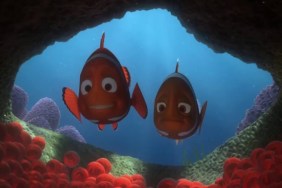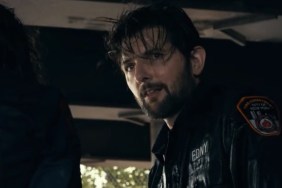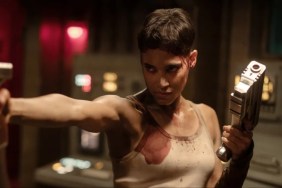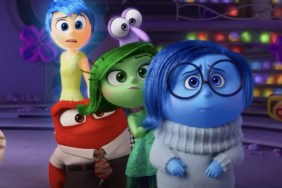
Last year I began covering the Oscar Contenders in September, which was about three months earlier than I ever had in the past. It brought a lot of conversation and made predicting the Oscars, Golden Globes and Screen Actors Guild Awards that much more fun. So, this year we will start even earlier. While I haven’t had the chance to update the RopeofSilicon Contenders section with this year’s crop, I will be getting to that very soon. For now, let’s get into this.
It’s been less than three months since Slumdog Millionaire took home 8 Oscars and we are now ready to see what film will stand above the rest in 2009 and the Cannes Film Festival has offered up our first topics of conversation.
We will begin with a title not included in the headline in Pixar’s Up, a movie I may be seeing this Wednesday, but the screening is in 2-D, which means I would have to wait wait until the 26th to see it in 3-D. However, the Cannes crowd got to see it in 3-D on opening night and for the most part it was a warm welcome, and if you didn’t already know, Up is the first animated film to launch the event.
So how did it play? Well, the reviews are, for the most part, solid, but Steven Zeitchik’s gauging of the post-screening response reads a little “tempered,” as he says:
But the post-screening response — an overused but accurate gauge — was noticeably tempered. The continuous waves of ovation that can last five or 10 minutes when an audience really loves a Cannes film (especially an opening-night one), didn’t happen.
Instead, what followed the credits was scattered applause that lasted about one or two minutes. Respectable, but, to our ears, very modest. It wasn’t a disaster like “The Da Vinci Code” or “Marie Antoinette” — but it wasn’t “The Diving Bell & the Butterfly,” either.
During the applause, Pixar chief creative officer John Lasseter and “Up” director Pete Docter stood at their seats for the customary basking. As we watched them in close-up on the giant screen, there seemed to be a little discomfort on their faces, a disappointment that the clapping wasn’t more hearty. (The applause ended when Lasseter shouted an abrupt “merci beaucoup.”)
The response in the reviews reads a little more impressed as Michael Rechtshaffen at The Hollywood Reporter calls the film, “winsome, touching and arguably the funniest Pixar effort ever.” He continues saying, “The gorgeously rendered, high-flying adventure is a tidy 90-minute distillation of all the signature touches that came before it.”
Todd McCarthy at Variety says the film is “a captivating odd-couple adventure that becomes funnier and more exciting as it flies along.” Later in his review he says, “Up is an exceptionally refined picture; unlike so many animated films, it’s not all about sensory bombardment and volume. As Pixar’s process is increasingly analyzed, the more one appreciates the care that goes into the writing. The underlying carpentry here is so strong, it seems it would be hard to go too far wrong in the execution.”

Richard Corliss at TIME says, “Extending the patented Pixar mix of humor and heart, Up is the studio’s most deeply emotional and affecting work.”
However, there were a few detractors. Jeff Wells liked the film, but had a couple of quibbles saying, “It’s not meant as a putdown to say that Up is too immersed in buoyant punchiness and mainstream movie-tude, which basically boils down to Pixar’s always-front-and-center task of giving the family audience stuff to laugh at and go ‘oooh’ and ‘aahh’ about, to finally matter all that much. It’s too entertaining, in put it another way, to sink in all that deeply.”
A little more negativity seeps into Kaleem Aftab’s review at The Independent who most notably says, “Watching with tinted glasses cannot hide the deficiencies of this adventure… Up is superb in setting up characters and a world that hankers over memories of yesteryear, but once the adventure moves into its obligatory action denouement, it enters a world of stereotypes that disappoints.”
Finally, Roger Ebert has added a bit of commentary, but he often spoils films so I haven’t read it yet, but you can do so right here.
Moving on we come to Francis Ford Coppola’s Tetro, a film I have said many times already I enjoyed, but the reaction from Cannes has been surprisingly on the negative side. I think it’s unfortunate so many people tend to mention films such as Apocalypse Now and the Godfather films in these reviews considering Tetro is in no way a film approaching the size and scope of those. Instead it is a small and personal film, something that has also garnered the ire of some critics.
Lisa Schwarzbaum at Entertainment Weekly is a critic I often tend to disagree with her opinion even if I agree with her liking of a film says, “The fevered story — at times awkwardly dramatique to the point of self-indulgent delirium, but gorgeously shot in voluptuous black and white with hot splashes of color sequences.” It is this second part I will get back to shortly since it appears the one spot Tetro will live on when it comes to award consideration.
Again we turn to Todd McCarthy at Variety who calls the film “a work of modest ambition and appeal,” but like Schwarzbaum he mentions the “gloriously shot in mostly black-and-white widescreen” as well as the talent of newcomer Alden Ehrenreich, whom I can’t imagine won’t be getting a breakthrough actor nod or two, or three at the end of the year. He is truly that good and will be mostly compared to Leonardo DiCaprio by anyone that sees this film.
Kirk Honeycutt at The Hollywood Reporter has the most glowing review starting off saying, “Tetro looks like the work of a film school grad, his head swimming with the classic black-and-white European films of the ’50s and ’60s and his mind unable to shake his struggles with his family. And yet, its author is Francis Ford Coppola, making a mostly triumphant return to his earlier filmmaking days and to Cannes itself, where he has picked up a couple of Palme d’Ors.”
Tetro has that feel of a film from the ’40s and ’50s and even though Richard and Mary Corliss at TIME didn’t like the film, again the imagery is something they couldn’t shake saying the film “looks great” and “the use of glistening or sepulchral black-and-white brings some of the glamour of classic Hollywood.”
While after seeing it I never thought it would be a major Oscar contender, but I do wish people liked it a little more since I had such a good time with it. However, it seems to me the cinematography by Mihai Malaimare Jr. is something that will be sure to stick around well into award season. And this won’t be the last you hear of the film on the site as I have just managed to secure an upcoming interview with Francis Ford Coppola. Look for that some time in June.










